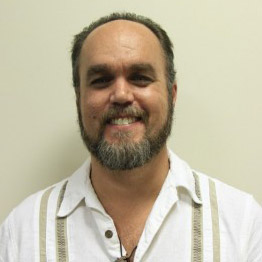 I used to think that violence could solve almost any problem. I was probably 15 when I told my friend Benji this. He was incredulous, calling me crazy. “What a sucker”, I thought. Not that I committed any violence beyond occasional vandalism, but I imagined myself to be mentally tough by acknowledging what seemed to me to be an obvious reality: might makes right. That kind of thinking lead me down a very dark path, one that dumped me in prison at age 18.
I used to think that violence could solve almost any problem. I was probably 15 when I told my friend Benji this. He was incredulous, calling me crazy. “What a sucker”, I thought. Not that I committed any violence beyond occasional vandalism, but I imagined myself to be mentally tough by acknowledging what seemed to me to be an obvious reality: might makes right. That kind of thinking lead me down a very dark path, one that dumped me in prison at age 18.
It was there, in the hyper-violence of my new world, that, after a few years, I discovered nonviolence. I think I first came across the term in Bo Lozoff’s book, “We’re All Doing Time.” He writes about the kinds of power and awareness that we can develop within ourselves through self discipline and spiritual practices. From there, I studied Gandhi, Martin Luther King, Thoreau and many other less well known practitioners of the path.
Most importantly, I practiced it in my own life. I wasn’t always successful, but over the years I ceased all physical violence, most verbal violence, and made a pretty good dent in violent internal dialogue. I learned that anger, pain and fear are okay, and that violence itself often arises out of not knowing a more effective way to deal with these emotions.
It seems that society as a whole would agree with my teenage self, though; violence works as an answer for many problems. How else to explain punitive systems in our courts, families, schools and jobs? How else to explain the satisfaction of violent resolution in movies? It’s what led some people to justify George Zimmerman’s killing of Trayvon Martin. It’s why we are still killing and dying 12 years after 9/11.
Nonviolence is often derided as idealistic and foolishly ineffective, but that is a lie. The truth is that it works, it’s just not always easy or simple. Take as an example the way schools have become militarized, with armed guards, metal detectors, checkpoints and other measures to enforce safety. Students do not thrive in these environments, yet proponents have argued that such measures are necessary to protect kids and staff.
A recent story in The Atlantic deserves our attention as a counterexample to this argument, however. “A Philadelphia School’s Big Bet on Nonviolence”, by Jeff Deeny, tells the story of the Memphis Street Academy. It was formerly the John Paul Jones Middle School, but the students had for years referred to it as the “Jones Jail” due to a heavy police presence, bars on the windows, frequent fighting and the numerous crimes committed there. The school is in the heart of one of the worst neighborhoods of the Kensington section of the city, notorious for drug users, prostitutes and shootings.
Last year the school was taken over by American Paradigm Schools. One of their first steps was to tear off the bars covering the windows. The school was totally redesigned to make it more open and welcoming. The police officers were replaced with “engagement coaches” drawn from veterans.
The police predicted a fiasco, but instead the school has seen a 90 percent reduction in serious incidents. A lot of things at Memphis Street Academy are different than at other schools, but one factor is at the heart of the changes seen there: nonviolence, specifically a program called Alternatives to Violence Project (AVP). AVP, which began in prisons, offers a concrete path and practical skills to engage in conflict without violence. The program, “emphasizes student empowerment, relationship building and anger management over institutional control and surveillance.”
This isn’t some pie in the sky dream being played out in a hippie commune somewhere. This is a school where, when the dismissal bell rang, the neighbors would retreat inside and local stores would close up shop. The police would establish a perimeter to protect residents from students. Now, a year later, the school is totally different. In a single year serious crimes, including “drug sales, weapons, assaults, rapes” dropped from 138 to 15 incidents.
That’s the kind of change that can be born from real nonviolence. Its power goes beyond political goals to the essence of how we live our lives. If it can work in a school that previously resembled a combat tour, imagine what it can do in other schools around the country where the situation isn’t as dire. Imagine it with me.































